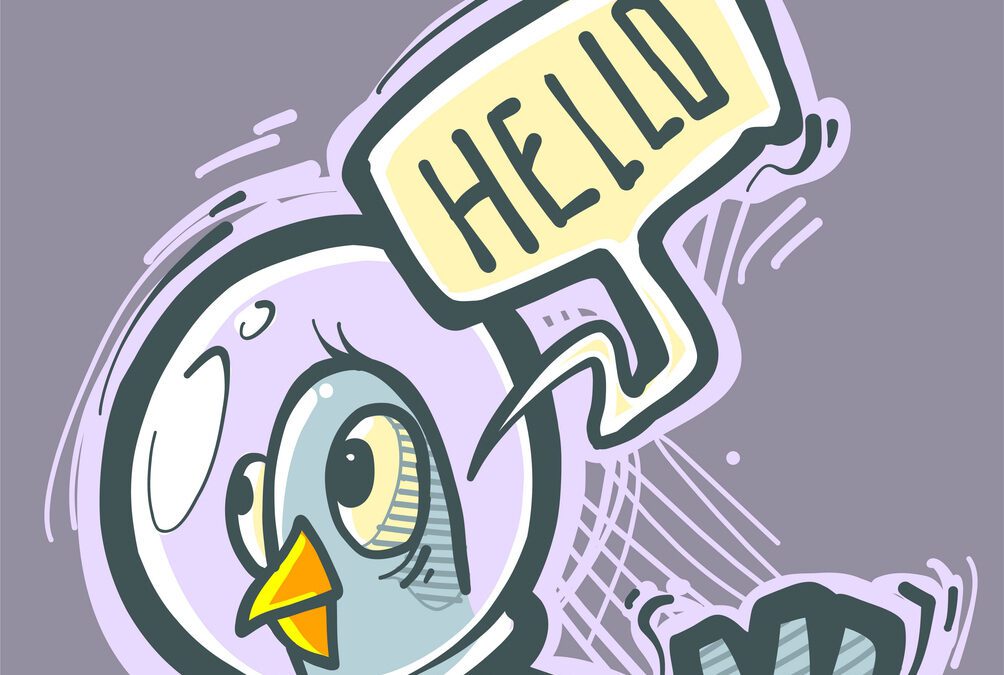
by Pigeon Patrol | Sep 25, 2024 | Bird Deterrent Products, Bird Netting, Bird Spike, Bird Spikes, Pigeons, Pigeons in the News
In a messy but unsuccessful war against pigeons on city buildings, Denver has tried highfrequency sirens, electrified toe strips and an anti-perching product called Hot Foot. But now city officials think they finally have found a weapon that works: hallucinogenic chemicals.
For the past year, the city has been feeding pigeons corn laced with a substance called Avitrol, which sends birds into convulsions, sometimes fatal, that scare away the rest of the flock.
With so many pigeons on bad trips, city workers say it’s the first time in memory that people can walk without fear of plops from the ledges, windowsills and outcroppings of the ornate City and County Building and Greek Theater.

Hand-drawn funny cute illustration – Curious pigeons.
The acidity in pigeon droppings had become such a potent problem that the city is spending $100,000 this summer to power-wash bird scat from buildings around Civic Center.
“It got to the point where you felt like you needed ski goggles to look up at the City and County Building,” said John Hall, manager of public office buildings for Denver. “Pigeons are urban vermin.”
Though the same Avitrol chemical also is being used against pigeons at Coors Field, St. John’s Episcopal Cathedral and Rose Medical Center, not everyone is convinced it’s the No. 1 solution to the No. 2 problem.
Just a few blocks across Civic Center, state maintenance workers worry that Denver Mayor Wellington Webb merely is scattering pigeons from his building to do their business on the state Capitol.
And animal-rights activists are aghast.
“It takes 40 pigeons pooping all day in one place to equal what a dog leaves on my lawn in one drop,” said Catherine Hurlbutt, 87, who has rescued and nurtured hundreds of injured birds at her south Denver home. “You’re not supposed to say a bad word about dogs, but people think it’s OK to poison pigeons.”
When New York City residents started using Avitrol on pigeons, Grace Slick, the famed Jefferson Airplane singer of the ’60s drug anthem “White Rabbit,” protested to Mayor Rudy Giuliani in a letter.
“I have considerable experience on the subject of mind-altering drugs, and I can tell you that Avitrol is not your run-of-the-mill hallucinogen,” Slick wrote. “It causes violent shaking, trembling, thirst, nausea, convulsions, disorientation and a slow death. Wow, talk about a bad trip!”
Last year, the New York State Assembly passed a bill allowing cities to ban Avitrol, but Gov. George Pataki, heeding a request from Giuliani, vetoed the bill.
All the flap is over a 1-pound bird that was native to Europe but brought to North America in the 1600s.
Supporters call them rock doves, which mate for life and feed milk to their young, and note that their homing ancestors helped in World War II by transporting spy messages. Detractors liken them to rats and cockroaches that carry diseases and dive-bomb passers-by with fecal glop.
Denver has struggled for decades to keep Downtown pigeons under control. When workers put spikes on building ledges to keep pigeons from roosting, the birds simply built nests atop them and enjoyed air-cooled nests in the summer. When workers tried a chemical spread called Hot Foot, birds built new nests and enjoyed warmer roosts for the winter.
When world leaders visited Denver for the Summit of the Eight in 1997, city workers installed electrified wires atop ledges favored by pigeons at Civic Center’s outdoor Greek Theater. The wires suffered from frequent short-circuits.
High-frequency radio speakers were supposed to drive the pigeons batty, but the birds ended up perching atop them anyway.
City officials said their war against pigeons seemed lost – until Denver hired the Pigeon Man.
The latest owner of a 47-year-old family business called Bird Control, Doug Stewart said Avitrol is one of his most effective tools against pigeons. When he started working for Denver a year ago, the City and County Building was home to hundreds of pigeons.
But with a $250-a-month city contract, Stewart started sprinkling Avitrol-laced corn on the roof of city hall. Recently, Stewart scrambled across the roof of the four-story building with his monthly dosage of bait in his backpack.
While the rooftop view of the Rocky Mountains to the west and the state Capitol to the east was magnificent, Stewart was most proud of something he didn’t see.
There were few birds, or fresh droppings, anywhere.
So he laid down a few small piles of Avitrol-laced corn, which costs him $50 a pound, and talked about a job that has taken him across the rooftops of the city, from Lakeside Mall to the steeple at St. John’s Episcopal Cathedral – and some truly disgusting abandoned apartment buildings in-between.
“I get asked all the time: Am I killing pigeons?” Stewart said. “There’s no way in the world I want any dead pigeons. I want to keep them fat, happy and on the move. It’s good for my business.” According to the government-approved warning label, Avitrol is a “poison with flock-alarming properties, used for the control of feral pigeons in, on, or in the area of structures, feeding, nesting, loafing and roosting sites, in such a way that a part of the flock may react and frighten the rest away. Birds that react and alarm a flock usually die.”
Scientific studies show the chemical temporarily alters brain waves and throws the bird into spasms and convulsions. When an Ontario, Canada, environmental official banned the use of non-humane vertebrate pesticides in 1975, a team of University of Ottawa researchers concluded that Avitrol “appears to be humane based on scientific evidence.”
“Upon eating the active ingredient of Avitrol in a corncob base, the birds begin to flap wings, vocalize and convulse,” said the study led by pathologist Henry Roswell.
“Other birds seeing this activity in their colleagues become alarmed and fly away to another area.” Critics of the use of bird repellants such as Avitrol claim that their use merely shifts birds from one area to another.
“Avitrol is not intended to kill birds. However, some do die, although the numbers are minimal in comparison to the hundreds that make up the flock,” Roswell said.
Death-rate estimates range from 1 percent to 20 percent of pigeons consuming Avitrol.
Meanwhile, workers at the Colorado Capitol wonder whether the city is dropping its pigeon problem on the state. In the past year, state workers have installed five special anti-pigeon Plexiglas barriers – at a cost of $300 each – on ledges above the Capitol’s west steps. When told Denver has been using a chemical that may be moving city birds to the state Capitol, state central services director Rick Malinowski said, “Thanks a lot! We may have to retaliate.”
City workers fear the consequences. At the city’s Greek Theater, maintenance worker Ray Martinez set down his coffee cup one morning on an outdoor step before walking inside an office.
When he returned to his coffee cup a few minutes later, he saw something that jolted him awake.
“I was ready to take a sip and I looked down and thought, “Hey, what’s going on here? I take my coffee black!’
” Martinez said. “I was so mad I threw my cup at that bird.”
Pigeon Patrol
Pigeon Patrol Products & Services is the leading manufacturer and distributor of bird deterrent (control) products in Canada. Pigeon Patrol products have solved pest bird problems in industrial, commercial, and residential settings since 2000, by using safe and humane bird deterrents with only bird and animal -friendly solutions. At Pigeon Patrol, we manufacture and offer a variety of bird deterrents, ranging from Ultra-flex Bird Spikes with UV protection, Bird Netting, 4-S Bird Gel and the best Ultrasonic and audible sound devices on the market today.
Canada’s top wholesaler for bird deterrent products for twelve consecutive years.
Contact us at 1- 877– 4– NO-BIRD, (604) 585-9279 or visit our website at https://www.pigeonpatrol.ca/
Bird Gone, Pigeon Gone, Pigeon problems, pigeon spikes, 1-877-4NO-BIRD, 4-S Gel, Bird Control, Pigeon Control, bird repellent, Bird Spikes, sonic bird repellent, stainless steel bird spikes, bird spikes Vancouver, Ultra Sonic Bird Control, Bird Netting, Plastic Bird Spikes, Canada bird spike deterrents, Pigeon Pests, B Gone Pigeon, Pigeon Patrol, pest controller, pest control operator, pest control technician, Pigeon Control Products, humane pigeon spikes, pigeon deterrents, pigeon traps, Pigeon repellents, Sound & Laser Deterrents, wildlife control, raccoon, skunk, squirrel deterrent, De-Fence Spikes, Dragons Den, Pigeon, Pigeon Patrol, Pigeons Roosting, Vancouver Pigeon Control, Bird Spikes, Bird Control, Bird Deterrent, Pigeon Deterrent, Surrey Pigeon Control, Pest, Seagull deterrent Vancouver Pigeon Blog, Birds Inside Home De-fence, Pigeon Nesting, Bird Droppings, Pigeon Dropping, woodpecker control, Keep The Birds Away, Birds/rats, seagull, pigeon, woodpecker, dove, sparrow, pidgeon control, pidgeon problem, pidgeon control, flying rats, pigeon Problems, bird netting, bird gel, bird spray, bird nails, bird guard, Pigeon control, Bird deterrents, Pigeon deterrents, Bird control, solutions, Pigeon prevention, Pigeon repellent, Bird proofing, Pest bird management, Pigeon spikes, Bird netting, Humane bird control, Bird exclusion, Urban bird control, Anti-roosting devices, Pigeon removal, Bird barriers
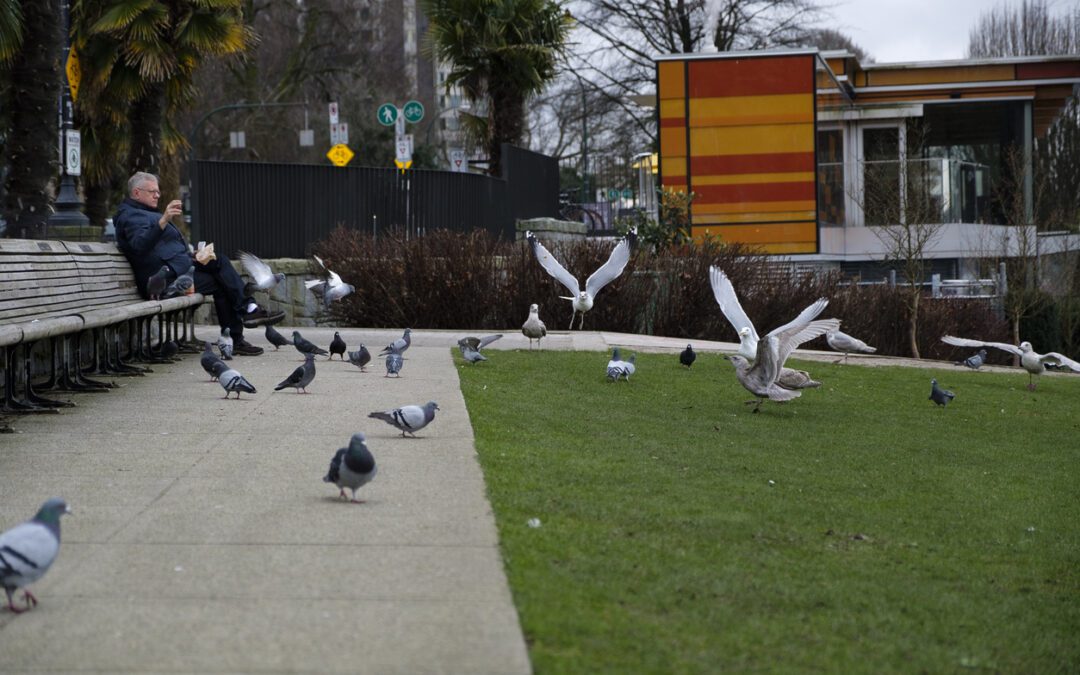
by Pigeon Patrol | Sep 25, 2024 | Bird Deterrent Products, Bird Netting, Bird Spikes, Columbidae
A man feeds the pifeons in Times Square in 1949 (and was probably beaten a short time later.)
Rats with wings, or majestic streetwise bird? It’s a debate that’s raged almost as long as New York City has been called that. And this week, the war between the two sides boiled over again.

Injured peace dove, crossing out word “PEACE” that on the road sign. (Used clipping mask)
It started when the exclusive University Club had its feathers ruffled. It wanted to drape its storied building in netting, to protect it from pigeon poo, which eats away at stone and metal. But the Landmarks Commission said it would have to wait for approval, as it would be a “visible change” to the landmarked Italian Renaissance building’s façade. As if the crap wasn’t a “visible change” enough.
Meanwhile, over on East 93rd Street, there was a scuffle involving longtime pigeon activist Anna Dove and her neighbor, who snatched away her bag of seed after he saw her feeding the pigeons on the sidewalk. The police were summoned.
“It’s disgusting,” said her nemesis, retired teacher Arthur Schwartz. “She’s feeding the rats.”
And with the live pigeon-shooting state championships in Pennsylvania coming up, it’s almost guaranteed that there will be an increase in demand of pigeon-poaching — New York City is a favorite spot for trapping them and transporting them to be used as live targets. The animal-rights activists will be out with their cameras and signs to stop them.
AD
No matter which side you’re on, one things for certain — by the end, things are going to get a little birdbrained.
*
“It’s not the pigeons that are the problem, it’s the number of them,” says Andrew D. Blechman, author of “Pigeons: The Fascinating Saga of the World’s Most Revered and Reviled Bird.” “They’re gentle creatures. The problem is that they get in our face, just like we get in each other’s faces.”
No one one’s quite sure of how many pigeons are in New York City. One adage is “one pigeon per person,” which would put their numbers at about 7 million. They each produce about 25 pounds of waste per year.
Pigeons love cities because of the many ledges, windowsills, eaves and rooftops available for them to roost in, which mimics their natural habitat of high cliffs. Pigeon pairings are monogamous, often mating for life, and both parents raise the babies — called squab — for a time, sitting on the eggs in shifts.
The pigeon includes about 298 species of bird, but the Rock Dove is the most common to the New York area, according to the Parks Department. The grey, bobbing-headed birds usually have purple-green iridescence around the neck area. They’re the scruffiest members of the dove family — although “dove” usually connotes the pure white symbols of peace, not the pizza scavengers of city streets. (Just say they’ve been pigeonholed.)
“If they were white,” Blechman says, “people would love them.”
Blame the French for our pigeon problems. The little pluckers first arrived in the early 1600s with French settlers who used them for meat. They were easy to raise — they could be kept in a barn, where they’d perch on the rafters, and young pigeons served as a good source of protein.
But they soon escaped their confines and went feral.
City life agreed with them and allowed them to flourish — and in some cases, over-flourish. Their natural predators, like falcons and hawks, aren’t found here in great numbers.
Courtney Humphries, author of “Superdove: How the Pigeon Took Manhattan . . . And the World,” concedes that pigeon are pilloried partly because of their “persistence. They nest on the buildings we consider our territory, and they don’t like to be moved.”
The average city pigeon has a lifespan of three to five years. With all the food scattered throughout the garbage cans and sidewalks — plus well-meaning human feeders — they spend less time looking for grub, which leaves more time for mating.
“The biggest problem is the people who overfeed them,” says Blechman. “Every city has about a dozen of them, and they’re the ones who cause the [overpopulation] problem.”
He suggests that if you want to feed the birds, hand out just a teaspoon full of birdseed for a flock. “It’s just enough to give them a little extra energy while they’re out trying to find their own food.”
“If nobody fed pigeons, I think things would look a lot different,” agrees Humphries, who says that human feeders end up creating dense flocks. “A lot of the problem with pigeons comes from people.”
If you can’t freeze the hearts of little old ladies, though, you could try eating them (the pigeons, that is). Squab — baby pigeons that haven’t flown yet — is on the menu at many restaurants around the city, particularly French. They’re “basically the milk-fed veal of the sky,” says Blechman — tender, mostly dark meat, and one of the only poultry that can be eaten rare. (Pigeons produce their own milk-like substance, which they feed to their young by regurgitation.)
Pigeon pot pie was a huge colonial favorite. Today, try the Squab and Foie Croustillant at the Modern, Danny Meyer’s restaurant at the Museum of Modern Art.
*
Unless the appetite for squab skyrockets, New York’s options are few. Avicide — poisoning birds — was made illegal in 2000, when the state Legislature passed a bill outlawing the use of “flock dispersal agents” like Avitrol in cities with more than 1 million people.
Before that, property managers regularly hired pest control services to dole out Avatrol to flocks of pigeons.
“In theory, you would mix it with feed, and when one pigeon ate some of the treated food, they would begin to suffer from neurological toxicity,” explained Stephanie Boyles, wildlife expert at the Humane Society of the United States. “When their flockmates saw them suffering, it would prompt them to leave the area.”
In practice, however, overdosing often led to large numbers of birds convulsing and writhing in pain on the street before their deaths. Welcome to New York!
The last major flare-up between pigeons and people was in 2007, when City Councilman Simcha Felder released a report plaintively titled, “Curbing the Pigeon Conundrum.”
Claiming that their droppings carried a host of diseases like histoplasmosis, he proposed a $1,000 fine to anyone feeding them, as well as curbing their numbers through birth control (a measure that cities like Los Angeles have adopted, although some argue that it’s unsustainable), and appointing a city “Pigeon Czar” to oversee other pigeon-control issues.
The NYC Department of of Health and Mental Hygiene maintains that contact with their droppings only poses a small health risk, and that “routine cleaning of droppings (e.g. from windowsills) does not pose a serious health risk to most people,” although disposable gloves are a good idea.
The Humane Society came out against the anti-feeding fine because they weren’t sure it would actually make a difference in reducing flocks, said Boyles. “We still suggest working with communities to create places where pigeons are welcome, and discouraging them where they’re not.”
While Felder’s bill didn’t fly, it was only one of many efforts to keep pigeons clipped.
In 2006, pigeon loitering was so dense near the Army Recruitment Center in Times Square, speakers were set up to broadcast sounds of falcons and pigeons being attacked, in hopes of scaring them away. In 2003, they had so overwhelmed Bryant Park that the operators invited a falconer and his hawk to the park for a week to scare away (not eat) the pigeons.
In 2007, the MTA installed Bird-B-Gone on some of its elevated stations along the 7 line, as well as others. The electronic system zapped birds that got too close.
In the ’80s, plastic owls were a big seller. Today, a slightly more high-tech version, called the RoboHawk, moves its head, wings, and makes what its creators hope are pigeon-threatening sounds.
Every so often, a politician considers reviving an overall anti-feeding bill, since, for now, it’s only illegal in city parks where signs are posted (the fine is usually $50).
Some cling to the hope that the city will come to its senses and declare war. Because they’re a non-native species, pigeons are not protected by either the Federal Migratory Birds Act or New York state laws. Can anyone say hunting season?
It’s got to be done mafia-style, though. Culling is only a temporary solution — as with most wild birds, quick breeding will put their numbers back to pre-cull figures within weeks, according to Pigeon Control Advisory Service.
*
But spare a thought, pigeon haters, for your majestic foe. Pigeons have more qualities than you think.
Although city birds aren’t particularly active, pigeons are built to be athletes — a trained bird can fly up to 60 miles per hour, and they can stay in the air for 500 miles. They’re meant for flying long distances, and have “homing” instincts, which means they will naturally find their way back.
This talent is why they were literally drafted into the United States Army Pigeon Service.
A million served in both world wars, where they delivered messages across enemy lines and saved thousands of soldiers’ lives. One pigeon, Cher Ami, won a French medal for his bravery for flying through gunfire, finally delivering the message dangling from what was left of his foot. He’s now stuffed and in the Smithsonian.
The army’s Pigeon Breeding and Training Center was based at Fort Monmouth, NJ, and opened in 1917. Many of its “Pigeoneers” were “basically just boys out of Brooklyn, and they’d just bring their best birds,” Humphries says. (The training center was closed in 1957 when the Army stopped using them as messengers.)
Keeping pigeons on rooftops — and racing them — used to be much more popular. Who can forget Marlon Brando’s character in the 1954 film “On the Waterfront” shouting up to his friend Joey, “I got one of your birds!” right before Joey “accidentally” falls off the roof?
The city is full of equally vocal bird-lovers.
“They animate our lives,” argues Blechman, who says that despite writing a book on pigeons, he is not a “bird person,” and admits to having eaten them before. He’s come around, though. “You look out the window and you can have a pigeon land on your windowsill, and the same one will come back every day, and at the same time.
“What would the lonely, the unemployed, and the elderly do every day if it weren’t for pigeons?”
The Internet is atwitter with kooky pigeon fans. There’s a pigeon appreciation society on Facebook. On photo-sharing site Flickr, there’s a group called The Global Pigeon Art Appreciation Society.
“You are not alone,” the site reads. “Many artists have been inspired by pigeons.”
There is also a city listserv called “New York Pigeon People,” where members discuss how to rescue birds and share pigeon news.
You can eat them, race them, breed them, feed them, but you can’t escape them, whether you consider them the most misunderstood creatures of the flying community or the world’s worst bird. As Blechman put it, “We’re just going to have to learn to co-exist.”
Pigeon Patrol
Pigeon Patrol Products & Services is the leading manufacturer and distributor of bird deterrent (control) products in Canada. Pigeon Patrol products have solved pest bird problems in industrial, commercial, and residential settings since 2000, by using safe and humane bird deterrents with only bird and animal -friendly solutions. At Pigeon Patrol, we manufacture and offer a variety of bird deterrents, ranging from Ultra-flex Bird Spikes with UV protection, Bird Netting, 4-S Bird Gel and the best Ultrasonic and audible sound devices on the market today.
Canada’s top wholesaler for bird deterrent products for twelve consecutive years.
Contact us at 1- 877– 4– NO-BIRD, (604) 585-9279 or visit our website at https://www.pigeonpatrol.ca/
Bird Gone, Pigeon Gone, Pigeon problems, pigeon spikes, 1-877-4NO-BIRD, 4-S Gel, Bird Control, Pigeon Control, bird repellent, Bird Spikes, sonic bird repellent, stainless steel bird spikes, bird spikes Vancouver, Ultra Sonic Bird Control, Bird Netting, Plastic Bird Spikes, Canada bird spike deterrents, Pigeon Pests, B Gone Pigeon, Pigeon Patrol, pest controller, pest control operator, pest control technician, Pigeon Control Products, humane pigeon spikes, pigeon deterrents, pigeon traps, Pigeon repellents, Sound & Laser Deterrents, wildlife control, raccoon, skunk, squirrel deterrent, De-Fence Spikes, Dragons Den, Pigeon, Pigeon Patrol, Pigeons Roosting, Vancouver Pigeon Control, Bird Spikes, Bird Control, Bird Deterrent, Pigeon Deterrent, Surrey Pigeon Control, Pest, Seagull deterrent Vancouver Pigeon Blog, Birds Inside Home De-fence, Pigeon Nesting, Bird Droppings, Pigeon Dropping, woodpecker control, Keep The Birds Away, Birds/rats, seagull, pigeon, woodpecker, dove, sparrow, pidgeon control, pidgeon problem, pidgeon control, flying rats, pigeon Problems, bird netting, bird gel, bird spray, bird nails, bird guard, Pigeon control, Bird deterrents, Pigeon deterrents, Bird control, solutions, Pigeon prevention, Pigeon repellent, Bird proofing, Pest bird management, Pigeon spikes, Bird netting, Humane bird control, Bird exclusion, Urban bird control, Anti-roosting devices, Pigeon removal, Bird barriers
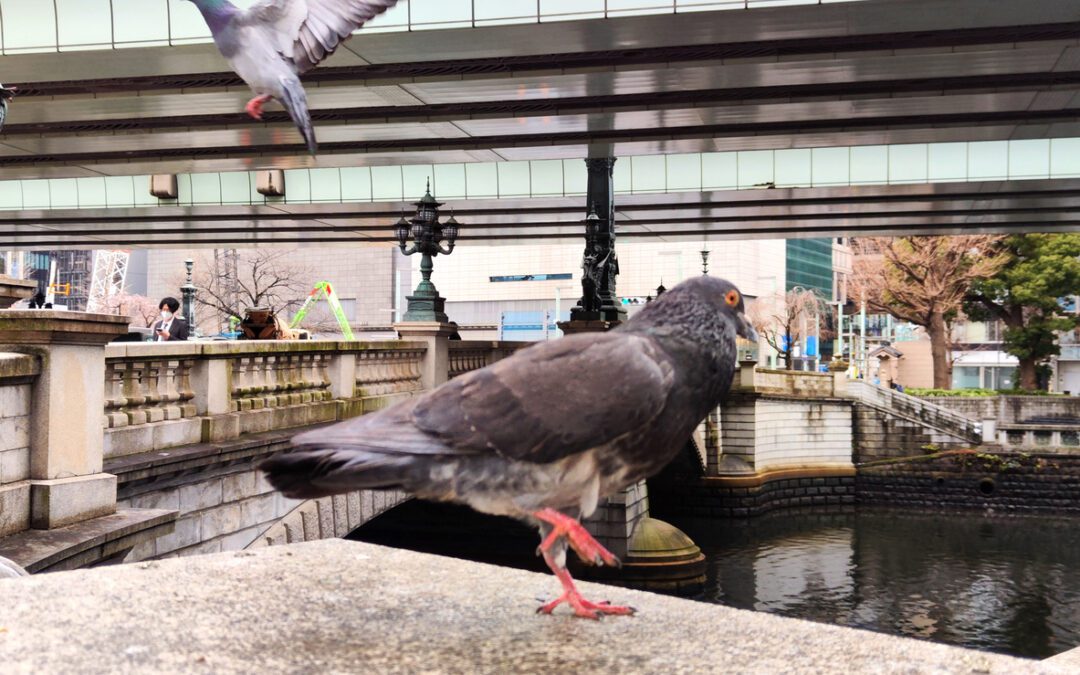
by Pigeon Patrol | Sep 19, 2024 | Bird Spikes, Columbidae, Doves
Passenger pigeons, so abundant during the early 19th century that skies darkened with passing flocks, may often have been nothing special in numbers during much of their last million years.
DNA from the extinct species, coaxed from toe pads of three museum specimens, suggests that population numbers fluctuated in the long term. The breeding population could have been at times only roughly several hundred thousand or even just tens of thousands of birds, says Chih-Ming Hung of National Taiwan Normal University in Taipei.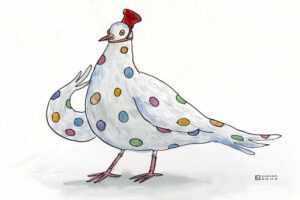
That’s a surprise. A survey of various other animals suggests that the size of the breeding population, like that pulled from the pigeon DNA, is typically about one-tenth of the whole population, Hung says. Yet the estimates of breeding populations in the new study are only one ten-thousandth of the 3 billion to 5 billion birds estimated in 19th-century eyewitness reports.
Hung doesn’t dispute those huge 19th century estimates. The DNA tells a story of bird numbers that soared and sank over time, he and his colleagues argue June 16 in the Proceedings of the National Academy of Sciences. He would need more analysis, he says, to see if an extreme crash during the most recent Ice Age would have produced such a skewed ratio in the last century. Or, in a more controversial scenario, he proposes that passenger pigeons may have had population booms and busts repeatedly on much shorter time scales.
Hung became curious about genetic trends of the passenger pigeon after a pivotal conversation several years ago regarding the 100th anniversary this September of the death of Martha, a passenger pigeon in the Cincinnati Zoo and the last known individual of the species.
Museum specimens’ toe pads provide the best picture yet of passenger pigeon genetics, Hung says. From the amount of variation the researchers found in the specimens’ DNA, they could work out an approximate number for the birds that were passing on their genes, called the effective population size.
Over the last million years, Hung and his colleagues found, the typical number of breeding birds could have averaged something like 330,000. Another method found lower numbers but a similarly small order of magnitude: 170,000 at the population’s height to perhaps 50,000 at its worst. The ups and downs over deep history fit with the timing of glacial cycles and with computer simulations of the niches available for the birds as climate changed.
Genetic tests can’t detect population ups and downs at the scale of a mere century. But Hung and his colleagues speculate that pigeon populations might have fluctuated in the short term too, perhaps shrinking drastically during times of skimpy acorns.
In theory, a species that surges in mind-boggling numbers certainly can go extinct quickly, says entomologist Jeffrey A. Lockwood of the University of Wyoming. The Rocky Mountain locust (Melanoplus spretus) is an example that savaged wide swaths of cropland during its booms but abruptly went extinct at the end of the 19th century when farmers took over the very specific habitats it needed to breed.
But passenger pigeons couldn’t have boomed in huge numbers quickly, says conservation biologist Stanley Temple of the University of Wisconsin–Madison. The birds tended just one nest a year and raised one chick. “There is absolutely no way these birds could rapidly increase their numbers,” he says. “It would take them probably centuries to increase their population even tenfold, let alone several orders of magnitude.”
Hung and critics agree that natural cycles, either short- or long-term, do not mean that the passenger pigeon would have eventually cycled into oblivion on its own. David Blockstein, senior scientist at the National Council for Science and the Environment in Washington, D.C., has described how intensive shooting at breeding colonies contributed to the species’ demise by disrupting its reproduction. And ecologist Stuart Pimm of Duke University says, “The basic cause for the passenger pigeon’s decline was the destruction of the Eastern forests.” The message of the paper, Hung says, is that “the passenger pigeon had repeatedly recovered from population lows throughout its history.” Then came 19th-century humans.
Pigeon Patrol
Pigeon Patrol Products & Services is the leading manufacturer and distributor of bird deterrent (control) products in Canada. Pigeon Patrol products have solved pest bird problems in industrial, commercial, and residential settings since 2000, by using safe and humane bird deterrents with only bird and animal -friendly solutions. At Pigeon Patrol, we manufacture and offer a variety of bird deterrents, ranging from Ultra-flex Bird Spikes with UV protection, Bird Netting, 4-S Bird Gel and the best Ultrasonic and audible sound devices on the market today.
Canada’s top wholesaler for bird deterrent products for twelve consecutive years.
Contact us at 1- 877– 4– NO-BIRD, (604) 585-9279 or visit our website at https://www.pigeonpatrol.ca/
Bird Gone, Pigeon Gone, Pigeon problems, pigeon spikes, 1-877-4NO-BIRD, 4-S Gel, Bird Control, Pigeon Control, bird repellent, Bird Spikes, sonic bird repellent, stainless steel bird spikes, bird spikes Vancouver, Ultra Sonic Bird Control, Bird Netting, Plastic Bird Spikes, Canada bird spike deterrents, Pigeon Pests, B Gone Pigeon, Pigeon Patrol, pest controller, pest control operator, pest control technician, Pigeon Control Products, humane pigeon spikes, pigeon deterrents, pigeon traps, Pigeon repellents, Sound & Laser Deterrents, wildlife control, raccoon, skunk, squirrel deterrent, De-Fence Spikes, Dragons Den, Pigeon, Pigeon Patrol, Pigeons Roosting, Vancouver Pigeon Control, Bird Spikes, Bird Control, Bird Deterrent, Pigeon Deterrent, Surrey Pigeon Control, Pest, Seagull deterrent Vancouver Pigeon Blog, Birds Inside Home De-fence, Pigeon Nesting, Bird Droppings, Pigeon Dropping, woodpecker control, Keep The Birds Away, Birds/rats, seagull, pigeon, woodpecker, dove, sparrow, pidgeon control, pidgeon problem, pidgeon control, flying rats, pigeon Problems, bird netting, bird gel, bird spray, bird nails, bird guard, Pigeon control, Bird deterrents, Pigeon deterrents, Bird control, solutions, Pigeon prevention, Pigeon repellent, Bird proofing, Pest bird management, Pigeon spikes, Bird netting, Humane bird control, Bird exclusion, Urban bird control, Anti-roosting devices, Pigeon removal, Bird barriers
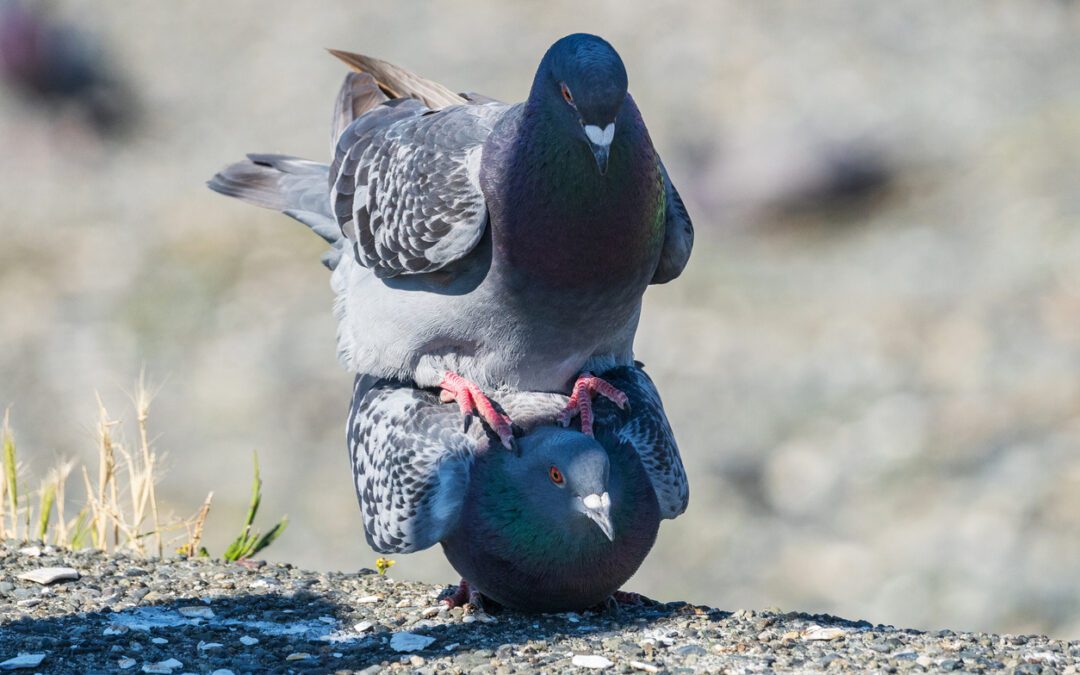
by Pigeon Patrol | Sep 19, 2024 | Bird Law, Bird Netting, Bird Spikes, Columbidae
If you’ve been around Ryerson, chances are that you have heard of, or maybe even got the chance to see, the one-legged pigeon. This famous icon is well-known for roaming the campus, along with being one of the school’s greatest memes.
When The Eye spoke with the pigeons five years ago, there were reports of a second wave of the Pigeons’ Movement. Recently, we have been in contact with some inside voices. After deciphering their coo-coos and squawks, it turns out that the second wave Pigeons’ Movement fell through because the leading figure went missing—the one-legged pigeon.
To get to the bottom of this, I set out to find her. It would be no easy task—the only way to do that is to explore every inch of Ryerson. Her Twitter hasn’t been updated since 2014. While searching around campus, I encountered many pigeons. But to the demise of the entire student body, all these pigeons had two legs.
All of the pigeons were quite strange. There were many different pigeons—concrete pecking, bread pecking, aggressive wing flapping. None of the pigeons could even gracefully win in a breadcrumb fight. The pigeon community has really taken a hit since this tragedy struck.
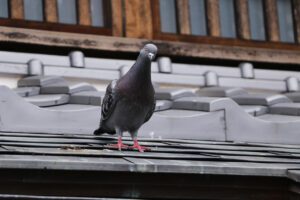
I asked the pigeons if they knew anything about the word on the street, but none had any useful information. It seems as though the pigeon’s movement is no longer birds of a feather. Actually, some of them even seemed bird-brained.
The regular day-to-day pigeons weren’t much help, but we searched the dustiest of alleyways and found a lone pigeon smoking a cigarette and wearing a trenchcoat.
After demanding a payment of seven Ritz crackers, he told us one of his feathered associates received a telepathic message that the one-legged pigeon is still alive, and is planning something big. We still don’t know if what the mysterious pigeon’s associate’s friend said was reliable or true. Due to not wanting to suffer an Alfred Hitchcock-esque death and get picked to pieces by the pigeons, we did not press further.
For now, unfortunately, the one-legged pigeon is still missing. Alas, I still have hope. I won’t stop working on this story. I’m willing to bet my last One Card dollars that Ryerson will be blessed with the return of this legend.
Pigeon Patrol
Pigeon Patrol Products & Services is the leading manufacturer and distributor of bird deterrent (control) products in Canada. Pigeon Patrol products have solved pest bird problems in industrial, commercial, and residential settings since 2000, by using safe and humane bird deterrents with only bird and animal -friendly solutions. At Pigeon Patrol, we manufacture and offer a variety of bird deterrents, ranging from Ultra-flex Bird Spikes with UV protection, Bird Netting, 4-S Bird Gel and the best Ultrasonic and audible sound devices on the market today.
Canada’s top wholesaler for bird deterrent products for twelve consecutive years.
Contact us at 1- 877– 4– NO-BIRD, (604) 585-9279 or visit our website at https://www.pigeonpatrol.ca/
Bird Gone, Pigeon Gone, Pigeon problems, pigeon spikes, 1-877-4NO-BIRD, 4-S Gel, Bird Control, Pigeon Control, bird repellent, Bird Spikes, sonic bird repellent, stainless steel bird spikes, bird spikes Vancouver, Ultra Sonic Bird Control, Bird Netting, Plastic Bird Spikes, Canada bird spike deterrents, Pigeon Pests, B Gone Pigeon, Pigeon Patrol, pest controller, pest control operator, pest control technician, Pigeon Control Products, humane pigeon spikes, pigeon deterrents, pigeon traps, Pigeon repellents, Sound & Laser Deterrents, wildlife control, raccoon, skunk, squirrel deterrent, De-Fence Spikes, Dragons Den, Pigeon, Pigeon Patrol, Pigeons Roosting, Vancouver Pigeon Control, Bird Spikes, Bird Control, Bird Deterrent, Pigeon Deterrent, Surrey Pigeon Control, Pest, Seagull deterrent Vancouver Pigeon Blog, Birds Inside Home De-fence, Pigeon Nesting, Bird Droppings, Pigeon Dropping, woodpecker control, Keep The Birds Away, Birds/rats, seagull, pigeon, woodpecker, dove, sparrow, pidgeon control, pidgeon problem, pidgeon control, flying rats, pigeon Problems, bird netting, bird gel, bird spray, bird nails, bird guard, Pigeon control, Bird deterrents, Pigeon deterrents, Bird control, solutions, Pigeon prevention, Pigeon repellent, Bird proofing, Pest bird management, Pigeon spikes, Bird netting, Humane bird control, Bird exclusion, Urban bird control, Anti-roosting devices, Pigeon removal, Bird barriers
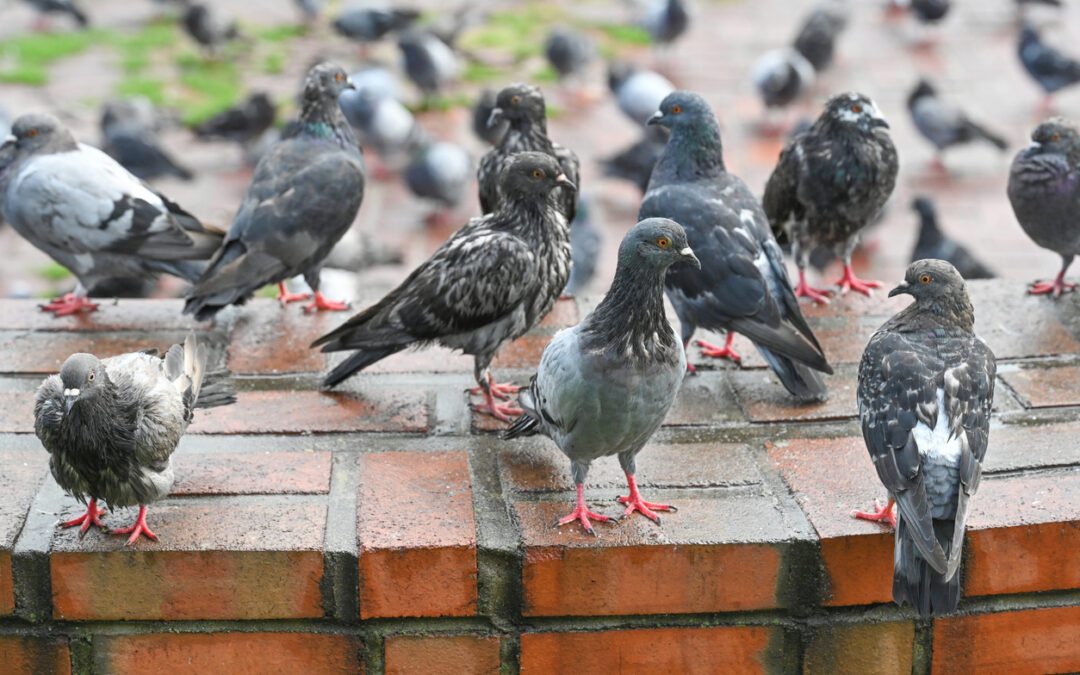
by Pigeon Patrol | Jul 9, 2024 | Animal Deterrent Products, Bird Deterrent Products, Bird Law, Bird Netting, Bird Spikes
Birth control for bird control? Toronto put pigeons on the pill to fight the flock
A city pilot that put pigeons on the pill to regulate the population costs about $24,000 a year and is listed as a success in this year’s budget.
Toronto’s pigeon problemA city pilot that put pigeons on the pill to regulate the population costs about $24,000 a year and is listed as a success in this year’s budget.
Luis Canseco gets anxious when he walks across the Yonge Street and Finch Avenue intersection because he knows he’s directly in the line of fire.
Not from cars or trucks — Canseco keeps a wary eye on the wires overhead where dozens of pigeons congregate, feather to feather.
Whether he can make it across unscathed has become a crapshoot. “I’ve been hit with liquid three times in the last year,” said Canseco. “Now I cross it with an umbrella, rain or not.”
Toronto’s prodigious pigeon population has long been a frustration for residents who — even away from their excrement-painted balconies — can seem like collateral damage in a war being waged between those who want to feed the flocks and those who want them gone.
Coun. Lily Cheng (Ward 18 Willowdale), whose ward includes Canseco’s intersection, said many residents have complained about the influx in recent years.
“There’s many condo residents who no longer feel like they can use their balconies, which is what precious outdoor space they have,” said Cheng, noting there’s been more signage in her ward imploring people to stop feeding the birds. “It’s just not hygienic and hard to keep clean.”
In an effort to humanely reduce the numbers of feathered bombers, the city has put some of them on the pill, an endeavour listed as a success in this year’s budget. Under the pilot project that began in May 2022, the city has set up feeders in four locations across the city that dispense feed laced with OvoControl — birth control for birds.
Esther Attard, veterinarian and director of Toronto Animal Services, said her department worked with a pest control company to set up automated rooftop feeders: two downtown, one in East York and one in North York. City staff are looking at adding a fifth downtown.
According to Attard, OvoControl has proven to be a humane, successful baby blocker for birds in various countries, including Spain where a recent study showed a steady decrease in the avian population after several years.
The feeders dispense a fixed amount of food that contains the birth control pellets at the same time every day. The flock size is then tracked by a nearby camera, although it’s nearly impossible to get the same pigeons to take their daily dose.
Attard said the pilot costs about $500 per site for a flock of no more than 150 pigeons, or about $2,000 a month for all four sites.
Attard said there has been “some decrease” in the flock size, but she expects to have a better picture of its progress by the summer.
“The bulk of them are domestic, abandoned pigeons,” she said, noting the 2022 bylaw amendment to restrict the number of pigeons residents can keep. “The difficulty has been getting people to stop feeding and conditioning them.”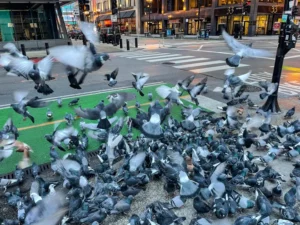
Canseco said he’s concerned about the health implications of having so much excrement around the city, but Attard noted that while it could carry silicosis or salmonella, the risk to humans is notably low and rarely poses a public health threat.
Vancouver’s TransLink tried a similar tactic at eight SkyTrain stations in 2019. The city’s automated rapid transit was often disrupted by pigeons that ended up on the tracks, triggering intrusion alarms, hard brakes and unnecessary service delays. A spokesperson for TransLink said the project lasted 18 months and returned in 2022 at seven stations. While the pigeon populations have not increased, Thor Diakow said, they also haven’t declined.
Attard said the method doesn’t harm the birds, even if they embrace their greed for feed and swallow more than one daily dose, but it also doesn’t harm what few seagulls and squirrels have gotten into the laced food.
Nathalie Karvonen, biologist and executive director of animal rescue Toronto Wildlife Centre, neither endorses nor condemns the pilot project.
“People tend to ride into two camps: either they are adamant they must continue to feed animals or they’re very upset because there’s too many pigeons,” Karvonen said, adding that as long as it’s humane and fiscally responsible the pilot is better than the cruel practices of poisoning or trapping and killing them.
Pigeon Patrol
Pigeon Patrol Products & Services is the leading manufacturer and distributor of bird deterrent (control) products in Canada. Pigeon Patrol products have solved pest bird problems in industrial, commercial, and residential settings since 2000, by using safe and humane bird deterrents with only bird and animal friendly solutions. At Pigeon Patrol, we manufacture and offer a variety of bird deterrents, ranging from Ultra-flex Bird Spikes with UV protection, Bird Netting, 4-S Bird Gel and the best Ultrasonic and audible sound devices on the market today.
Canada’s top wholesaler for bird deterrent products for twelve consecutive years.
Contact us at 1- 877– 4– NO-BIRD, (604) 585-9279 or visit our website at https://www.pigeonpatrol.ca/
Bird Gone, Pigeon Gone, Pigeon problems, pigeon spikes, 1-877-4NO-BIRD, 4-S Gel, Bird Control, Pigeon Control, bird repellent, Bird Spikes, sonic bird repellent, stainless steel bird spikes, bird spikes Vancouver, Ultra Sonic Bird Control, Bird Netting, Plastic Bird Spikes, Canada bird spike deterrents, Pigeon Pests, B Gone Pigeon, Pigeon Patrol, pest controller, pest control operator, pest control technician, Pigeon Control Products, humane pigeon spikes, pigeon deterrents, pigeon traps, Pigeon repellents, Sound & Laser Deterrents, wildlife control, raccoon, skunk, squirrel deterrent, De-Fence Spikes, Dragons Den, Pigeon, Pigeon Patrol, Pigeons Roosting, Vancouver Pigeon Control, Bird Spikes, Bird Control, Bird Deterrent, Pigeon Deterrent, Surrey Pigeon Control, Pest, Seagull deterrent Vancouver Pigeon Blog, Birds Inside Home De-fence, Pigeon Nesting, Bird Droppings, Pigeon Dropping, woodpecker control, Keep The Birds Away, Birds/rats, seagull, pigeon, woodpecker, dove, sparrow, pidgeon control, pidgeon problem, pidgeon control, flying rats, pigeon Problems, bird netting, bird gel, bird spray, bird nails, bird guard, Pigeon control, Bird deterrents, Pigeon deterrents, Bird control, solutions, Pigeon prevention, Pigeon repellent, Bird proofing, Pest bird management, Pigeon spikes, Bird netting, Humane bird control, Bird exclusion, Urban bird control, Anti-roosting devices, Pigeon removal, Bird barriers

by Pigeon Patrol | Jul 8, 2024 | Animal Deterrent Products, Bird Deterrent Products, Bird Law, Bird Netting, Bird Spike, Bird Spikes, Columbidae, Pigeon Spikes
At least one of the protesters’ claims is undeniably true. No one asked 2,000 pigeons if they wanted to have lights strapped to their legs in the name of art.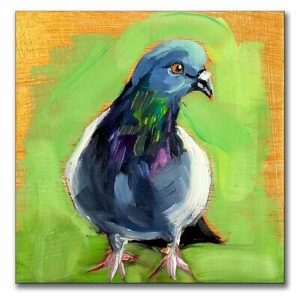
Nor did anyone ask the birds how they felt about being shooed from their homes at dusk and sent flying up to illuminate the Brooklyn sky.
But whether Duke Riley’s avian-powered performance piece “Fly by Night” constitutes pigeon abuse is a more complicated question.
More than 5,000 people have signed a change.org petition calling for the show, which opened May 7 at the Brooklyn Navy Yard, to be closed. At Sunday’s performance, a gaggle of protesters — perhaps several dozen — gathered outside the Navy Yard gates.
Their charges: that the birds are terrified by the flapping plastic flag Mr. Riley waves to keep them flying; that it is unnatural to make pigeons fly at night, when they normally rest; and that between their poor night vision and the distractions of the moving lights, they could become disoriented and crash into the East River.
An artist, Duke Riley, has trained 2,000 pigeons to fly above the Brooklyn Navy Yard with tiny lights attached to their ankles in a performance that will run every Friday, Saturday and Sunday through June 12. An artist, Duke Riley, has trained 2,000 pigeons to fly above the Brooklyn Navy Yard with tiny lights attached to their ankles in a performance that will run every Friday, Saturday and Sunday through June 12.CreditCredit…Yousur Al-Hlou
“There’s plenty of ways to create beautiful art without using unwilling participants who are forced to perform,” said Nora Marino, who runs the Animal Cruelty Exposure Fund.
Mr. Riley has kept pigeons most of his adult life, and says the birds are not suffering and that they fly when he waves his trash-bag flag for the same reason a dog gets excited when you pull out your car keys. The birds are not forced to fly, Mr. Riley said — every night, some choose to stay in their coops.
The show’s critics say “Fly by Night” disregards the growing sentiment against performing animals. Ringling Bros. is retiring its circus elephants, SeaWorld its killer whales.
Before “Fly by Night” opened, the nonprofit arts group that organized it, Creative Time, asked the director of the Wild Bird Fund, Rita McMahon, to inspect. The fund, based on the Upper West Side, treats more than 2,000 sick and injured pigeons a year.
“Mixing art and animals is a very risky business,” said Ms. McMahon, who is a state-licensed wildlife rehabilitator, “but I was very impressed.” The pigeons were healthy and well fed, their temporary homes beautiful and clean.
“I didn’t see any traumatized pigeons,” she added. “You see them mating, courting, everything, all over the boat. I think that’s a pretty good sign.”
“Fly by Night” runs on Fridays, Saturdays and Sundays until June 12, and the protesters say they will be out every night for the rest of the run.
Pigeon Patrol
Pigeon Patrol Products & Services is the leading manufacturer and distributor of bird deterrent (control) products in Canada. Pigeon Patrol products have solved pest bird problems in industrial, commercial, and residential settings since 2000, by using safe and humane bird deterrents with only bird and animal friendly solutions. At Pigeon Patrol, we manufacture and offer a variety of bird deterrents, ranging from Ultra-flex Bird Spikes with UV protection, Bird Netting, 4-S Bird Gel and the best Ultrasonic and audible sound devices on the market today.
Canada’s top wholesaler for bird deterrent products for twelve consecutive years.
Contact us at 1- 877– 4– NO-BIRD, (604) 585-9279 or visit our website at https://www.pigeonpatrol.ca/
Bird Gone, Pigeon Gone, Pigeon problems, pigeon spikes, 1-877-4NO-BIRD, 4-S Gel, Bird Control, Pigeon Control, bird repellent, Bird Spikes, sonic bird repellent, stainless steel bird spikes, bird spikes Vancouver, Ultra Sonic Bird Control, Bird Netting, Plastic Bird Spikes, Canada bird spike deterrents, Pigeon Pests, B Gone Pigeon, Pigeon Patrol, pest controller, pest control operator, pest control technician, Pigeon Control Products, humane pigeon spikes, pigeon deterrents, pigeon traps, Pigeon repellents, Sound & Laser Deterrents, wildlife control, raccoon, skunk, squirrel deterrent, De-Fence Spikes, Dragons Den, Pigeon, Pigeon Patrol, Pigeons Roosting, Vancouver Pigeon Control, Bird Spikes, Bird Control, Bird Deterrent, Pigeon Deterrent, Surrey Pigeon Control, Pest, Seagull deterrent Vancouver Pigeon Blog, Birds Inside Home De-fence, Pigeon Nesting, Bird Droppings, Pigeon Dropping, woodpecker control, Keep The Birds Away, Birds/rats, seagull, pigeon, woodpecker, dove, sparrow, pidgeon control, pidgeon problem, pidgeon control, flying rats, pigeon Problems, bird netting, bird gel, bird spray, bird nails, bird guard, Pigeon control, Bird deterrents, Pigeon deterrents, Bird control, solutions, Pigeon prevention, Pigeon repellent, Bird proofing, Pest bird management, Pigeon spikes, Bird netting, Humane bird control, Bird exclusion, Urban bird control, Anti-roosting devices, Pigeon removal, Bird barriers












